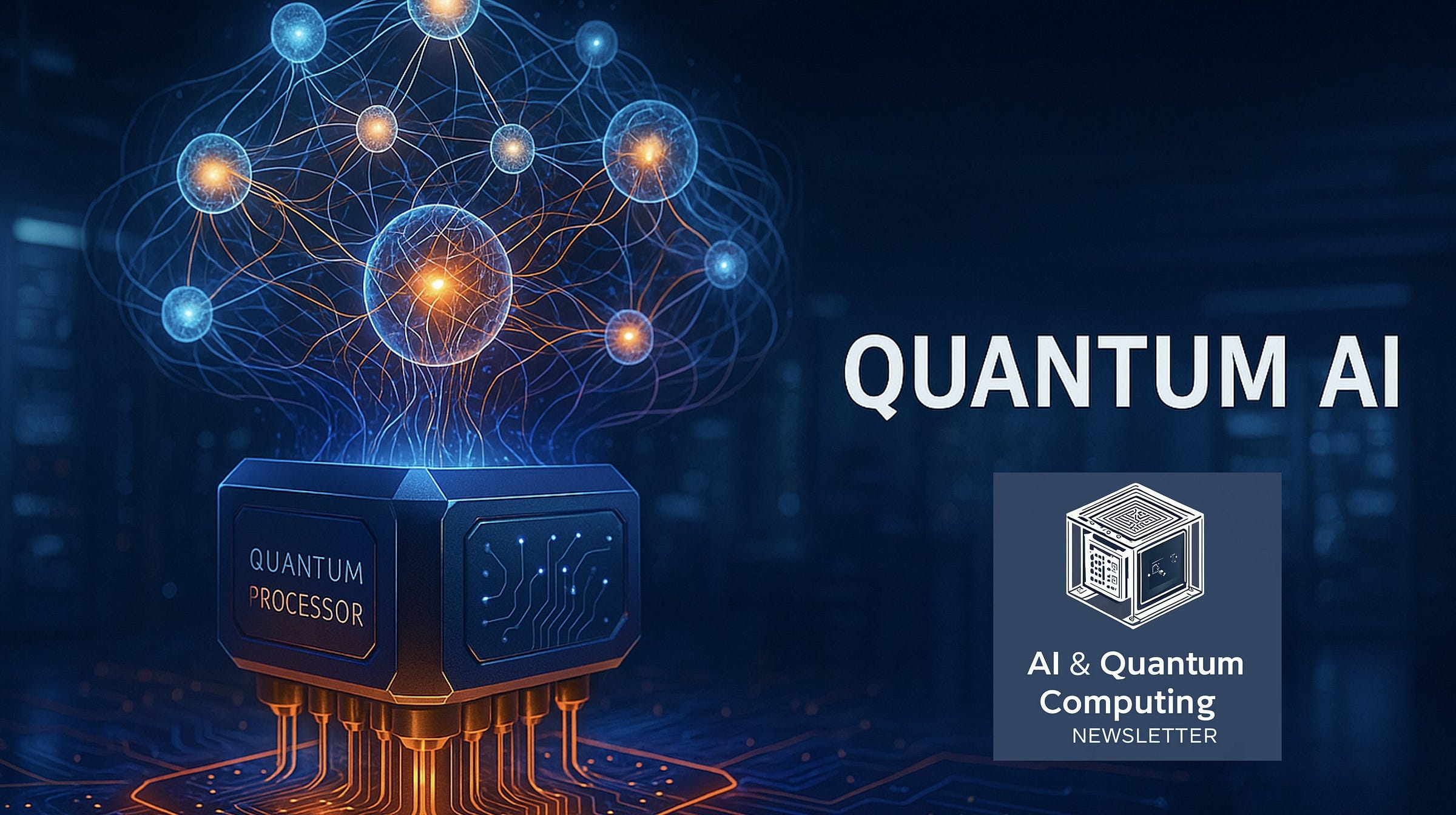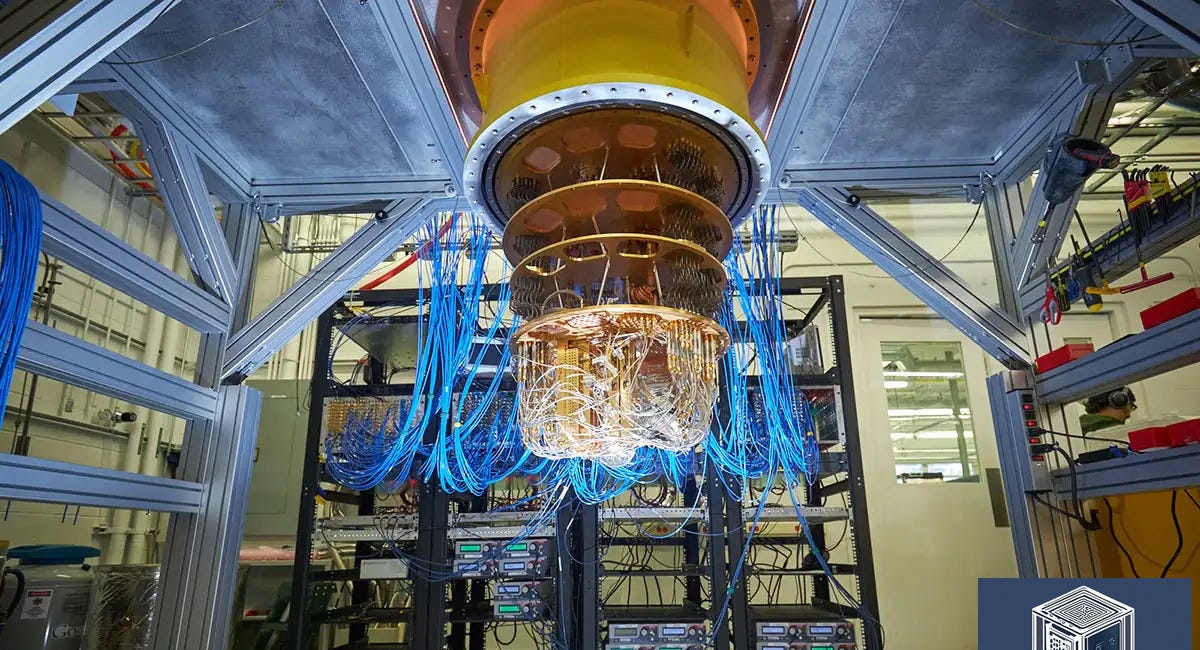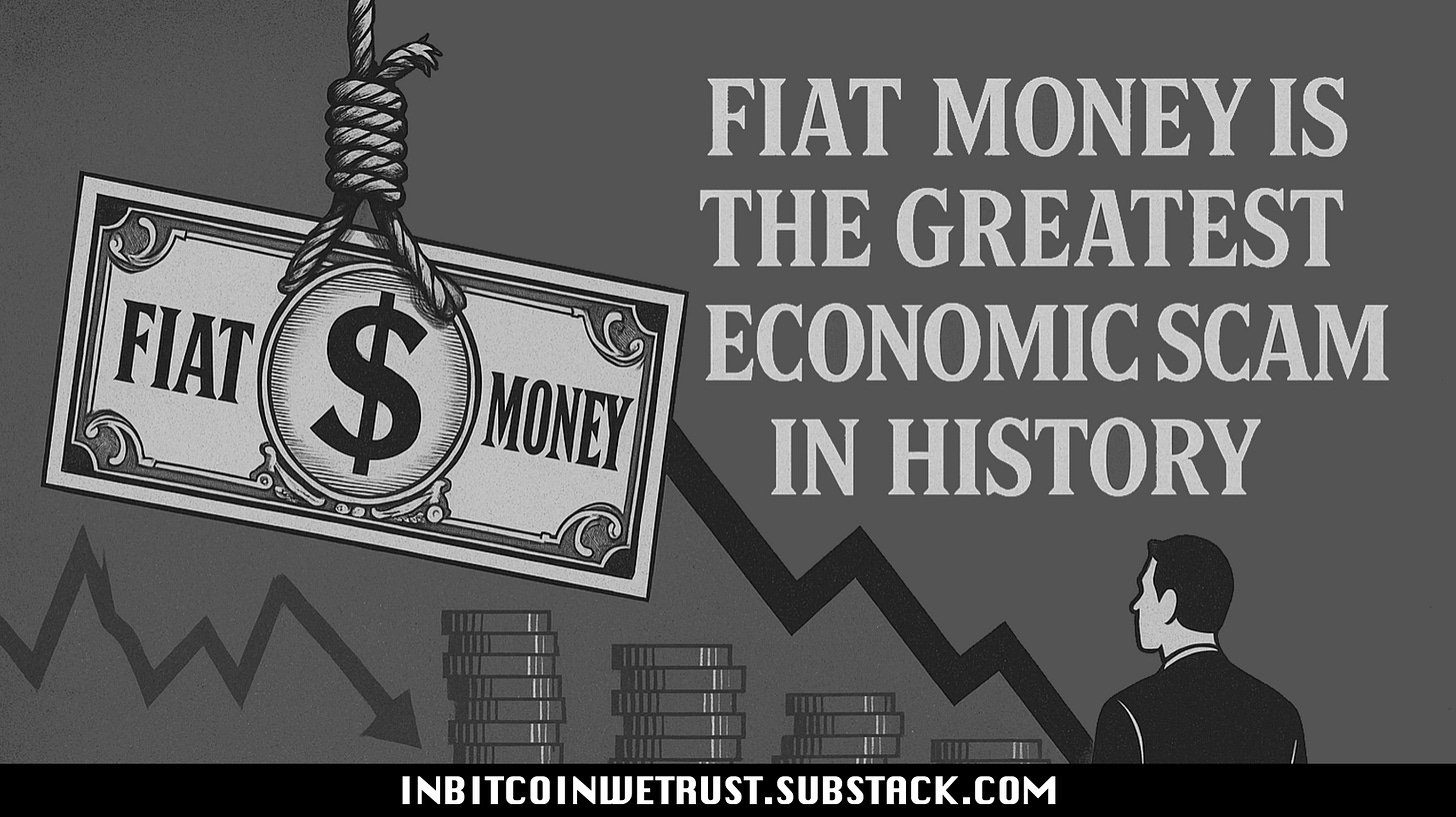The Hype vs. Reality Check: 5 Things Quantum AI Can Actually Do in the Next 5 Years.
Quantum Computing and AI partnership will deliver a new set of tools to tackle previously unsolvable problems.
The terms “Quantum Computing” and “Artificial Intelligence” are often spoken with an air of futuristic reverence, promising a world of sentient machines, unbreakable codes, and solutions to humanity's greatest problems. When you merge them into “Quantum AI,” the hype can reach a fever pitch. It's a concept that conjures images straight out of science fiction: super-intelligent entities capable of predicting the future, designing revolutionary technologies in a single afternoon, or even achieving consciousness.
But as we stand on the cusp of this new technological era, it's crucial to ground ourselves in reality. While the long-term potential of Quantum AI is indeed staggering, its immediate impact will be more subtle, specialized, and—for the businesses and researchers who can harness it—profoundly impactful. The revolution won’t look like a Hollywood blockbuster; it will look like a quiet, yet powerful, acceleration in specific, high-stakes fields.
This is not a story about creating a general, all-knowing intelligence. Instead, it's about building a new class of tools designed to solve a specific type of problem: the impossibly complex. These are problems that even the most powerful classical supercomputers would take thousands of years to crack.
Welcome to the Noisy Intermediate-Scale Quantum (NISQ) era. The quantum computers of today and those expected to emerge over the next five years are powerful but imperfect. They are “noisy” because their delicate quantum states are easily disturbed, leading to errors. They are “intermediate-scale,” possessing hundreds, not millions, of quantum bits (qubits). These are not the flawless, million-qubit machines of our science fiction dreams.
Yet, even in this nascent stage, they are poised to achieve what is known as “quantum advantage”—outperforming classical computers on specific, practical tasks. Forget about a quantum-powered chatbot that can debate philosophy. Instead, think about a specialized quantum algorithm that can design a better battery.
The reality of Quantum AI in the near term is not about replacing classical computers, but augmenting them. It's about a powerful new partnership where quantum processors tackle the slice of a problem that is quantum in nature, while classical computers handle the rest.
Let's cut through the noise and explore the five key areas where the fusion of Quantum Computing and AI will deliver tangible, world-changing results over the next five years.
A Quick Look Back at the History of Quantum Computers.
With announcements in the field of quantum computing continuing to multiply in recent months, whether from Google, IBM, or Microsoft, I think it's interesting to look back at the first steps in the quantum world that have brought us to where we are today. It all started in 1900, as you will see, with Max Planck.
1. Revolutionizing Drug Discovery and Personalized Medicine
The Hype: A Quantum AI will instantly cure cancer and allow us to live forever.
The Reality: Quantum AI will dramatically shorten the drug discovery pipeline from a decade to a matter of months, leading to highly personalized and more effective treatments.
The Problem: The human body is a massively complex quantum system. Every drug that works does so by interacting with molecules like proteins at a quantum level. The challenge for pharmaceutical companies is that simulating these interactions is an incredibly difficult computational problem. There are a near-infinite number of ways a potential drug molecule can fold and bind to a target protein. Classically, we rely on a brute-force, trial-and-error process of synthesizing and testing compounds in a lab, which is slow, expensive, and has a staggeringly high failure rate. It can take over a decade and billions of dollars to bring a single new drug to market.
The Quantum AI Solution: This is where Quantum AI shines. A quantum computer can simulate molecular interactions with a level of accuracy that is simply impossible for a classical machine. Instead of approximating, it can create a perfect digital twin of a molecule and precisely model how it will behave.
Here's how it will work in the next five years:
Accelerated Candidate Screening: A Quantum-enhanced AI will be able to screen billions of virtual molecules in a fraction of the time it would take to synthesize and test even a handful of them physically. It will identify the most promising candidates that are most likely to bind to a specific disease-causing protein.
Precision Drug Design: Instead of just finding existing molecules, Quantum AI will help design entirely new ones from the ground up, optimized for maximum efficacy and minimal side effects. By understanding the precise quantum interactions, researchers can design a drug that fits its target like a key in a lock.
Personalized Medicine: Soon, we will see the rise of treatments tailored to an individual's unique genetic makeup. A Quantum AI could take a patient's genomic data and simulate how different drug compounds would interact with their specific biology, predicting which treatment will be most effective before the first dose is ever administered. This could be transformative for complex diseases like Alzheimer's and various cancers.
Companies like Google’s DeepMind (with its protein-folding AI AlphaFold) have already shown the power of AI in biology. The next step is to infuse these systems with quantum processors to move from understanding existing proteins to designing new, therapeutic ones. We're not talking about a cure for all diseases overnight, but a fundamental shift in how we discover and develop medicine, making it faster, cheaper, and far more personal.
2. Designing New Materials for the Green Energy Transition
The Hype: A Quantum AI will invent a free energy device, solving the climate crisis instantly.
The Reality: Quantum AI will enable the discovery of novel materials needed for next-generation batteries, more efficient solar panels, and new catalysts to break down carbon emissions.
The Problem: The fight against climate change is, at its core, a materials science problem. We need better ways to generate, store, and use energy. That means we need new materials. We need a battery that can store more energy, charge faster, and be made from sustainable materials. We need solar cells that can convert sunlight to electricity with near-perfect efficiency. We need catalysts that can affordably capture carbon from the atmosphere or produce green hydrogen. The properties of any material—from its strength to its conductivity—are governed by the quantum interactions of its electrons. As with drug discovery, simulating these interactions is beyond the capacity of classical computers.
The Quantum AI Solution: Quantum AI provides a new toolkit for “materials by design.” Instead of discovering new materials through a slow process of accidental discovery and experimentation, we can design them with the exact properties we need.
Here's the five-year outlook:
Better Batteries: Companies like Mercedes-Benz and Volkswagen are already partnering with quantum computing firms to research new battery chemistries. In the next five years, expect Quantum AI to help design new electrolytes and electrode materials that lead to batteries with higher energy density, longer lifespans, and improved safety, which is crucial for electric vehicles and grid-scale energy storage.
More Efficient Catalysts: A key process for creating a green economy is catalysis. For example, the Haber-Bosch process, used to create fertilizer, is incredibly energy-intensive and accounts for a significant portion of global carbon emissions. A Quantum AI could help discover a new catalyst that allows this process to happen at room temperature, dramatically reducing its energy footprint. Similarly, new catalysts could make carbon capture technology economically viable.
Advanced Solar Cells: Quantum AI will be used to design new materials for photovoltaics that can absorb a wider spectrum of light and convert it to electricity with much higher efficiency, breaking through the current theoretical limits of silicon-based cells.
This isn't about a single magic bullet for climate change. It's about accelerating the innovation of the fundamental building blocks of a sustainable economy. By making our green technologies more powerful and efficient, Quantum AI will be a critical tool in our arsenal.
3. Optimizing Global Logistics and Complex Systems
The Hype: A Quantum AI will run the world's economy, eliminating market crashes and making everyone rich.
The Reality: Quantum AI will solve hugely complex optimization problems, leading to radically more efficient supply chains, reduced traffic congestion, and optimized energy grids.
The Problem: Many of the world's most challenging problems are what are known as “combinatorial optimization” problems. This means they have a staggering number of possible solutions, and finding the best one is like trying to find a single grain of sand on all the world's beaches. Consider the "traveling salesman problem," a classic example where you have to find the shortest possible route that visits a list of cities. As you add more cities, the number of possible routes explodes exponentially. This same underlying problem exists in global shipping, airline scheduling, and energy distribution. Billions of dollars are lost every year to inefficiencies in these systems.
The Quantum AI Solution: Quantum computers are naturally good at exploring a vast landscape of possibilities simultaneously. Using principles like superposition and entanglement, a quantum algorithm can assess a huge number of potential solutions at once. When combined with AI, it can quickly zero in on the optimal, or near-optimal, solution.
What to expect in the next five years:
Smarter Supply Chains: In the wake of global disruptions, companies are desperate for more resilient and efficient supply chains. Quantum AI will be used to optimize global logistics, from a shipping company planning the most fuel-efficient routes for its fleet to a retailer managing its inventory across thousands of stores to minimize waste and ensure products are where they need to be.
Reduced Traffic Congestion: Cities will begin to use quantum-inspired algorithms to manage traffic flow in real-time. By analyzing data from thousands of sensors and vehicles, these systems can dynamically adjust traffic signals and route autonomous vehicles to prevent jams before they even start, potentially reducing commute times and emissions.
A More Stable Energy Grid: As we add more intermittent renewable energy sources like wind and solar to the grid, balancing supply and demand becomes incredibly complex. Quantum AI will be used to optimize the flow of energy across the grid, ensuring stability and preventing blackouts.
This is the hidden, “plumbing” layer of the global economy where small percentage improvements can translate into billions of dollars in savings and significant reductions in our environmental impact.
4. Enhancing Financial Modeling and Risk Analysis
The Hype: A Quantum AI will perfectly predict the stock market, making investing foolproof.
The Reality: Quantum AI will provide a much deeper and more accurate analysis of financial risk and identify investment opportunities that are invisible to classical models.
The Problem: The financial world is a chaotic, complex system driven by an almost infinite number of variables. Investment banks and hedge funds build incredibly sophisticated models to try and price assets, manage risk, and identify profitable trading strategies. However, these models are always a simplification of reality. They often struggle to account for extreme, “black swan” events and can be slow to run, meaning opportunities are missed.
The Quantum AI Solution: Quantum algorithms are perfectly suited for the kind of probabilistic calculations that lie at the heart of finance. Algorithms like Quantum Amplitude Estimation can perform complex risk analyses, like a Monte Carlo simulation, quadratically faster than classical methods.
The five-year impact:
Superior Portfolio Optimization: A Quantum-enhanced AI will be able to analyze the complex web of correlations between thousands of different assets to construct a truly optimized investment portfolio—one that perfectly balances risk and reward according to an investor's goals.
More Accurate Risk Modeling: For banks, accurately assessing risk is paramount. Quantum AI will allow them to run much more sophisticated risk models that can better predict the impact of market shocks, leading to a more stable financial system. This includes everything from calculating Value at Risk (VaR) on a portfolio to pricing complex derivatives.
Fraud Detection: By analyzing transaction data in new ways, quantum machine learning algorithms will be able to identify subtle patterns of fraudulent activity that are currently undetectable.
Firms like JPMorgan Chase, Goldman Sachs, and various fintech startups are already heavily investing in this space. They aren't looking for a crystal ball, but a more powerful telescope to navigate the inherent uncertainty of the financial markets.
5. Kickstarting the Era of “Post-Quantum Cryptography”
The Hype: Quantum computers will instantly break all encryption, leading to a digital apocalypse where all our data is stolen.
The Reality: The threat is real, but it is being proactively addressed. Quantum AI's role here is two-fold: it is both the lock-breaker and the key-maker.
The Problem: Much of the cryptography that secures the internet, banking, and government communications relies on mathematical problems that are too hard for classical computers to solve. For example, factoring a very large number into its two prime components. In 1994, a mathematician named Peter Shor developed a quantum algorithm that could solve this problem with ease, meaning a sufficiently powerful quantum computer could, in theory, break much of our current encryption. While the NISQ computers of today are not powerful enough to do this, the threat is on the horizon.
The Quantum AI Solution: The development of quantum computers has spurred a global effort to create new “quantum-resistant” cryptographic standards. This is a fascinating area where Quantum AI plays on both sides of the fence.
What to expect in the next five years:
Testing New Defenses: Quantum AI will be used as a tool by cybersecurity experts to probe these new quantum-resistant algorithms for weaknesses. By simulating quantum attacks, they can ensure the next generation of cryptography is truly secure.
Developing Quantum Security: Beyond just creating new classical algorithms that are hard for quantum computers to break, we will see the rise of inherently quantum security methods. One of these is Quantum Key Distribution (QKD), which uses the principles of quantum mechanics to create an unbreakable encryption key. Any attempt to eavesdrop on the key's creation would disturb its quantum state, immediately alerting the parties. We will see increased adoption of QKD for securing ultra-sensitive communications in government and finance.
The transition to post-quantum cryptography will happen largely behind the scenes. It's a race between building the code-breakers and building new codes. For now, the code-makers are winning, and the work being done over the next five years will be crucial to ensuring a secure digital future.
The Real Revolution
The true story of Quantum AI over the next five years is not one of disruptive, earth-shattering breakthroughs that change society overnight. It is a story of quiet, focused progress in the labs and data centers of the world's most innovative organizations.
It is about a new partnership between human intelligence, artificial intelligence, and the strange and powerful laws of quantum mechanics. This partnership will not deliver sentient robots or solve all our problems with the flip of a switch. It will deliver something arguably more valuable: a new set of tools to tackle the previously unsolvable. It will give us better drugs, cleaner energy, more efficient systems, and a more secure digital world.
The quantum revolution is coming, not with a bang, but with the silent hum of a super-cooled processor modeling a single, perfect molecule. And the results will change everything.
Will Quantum Computing Revolutionize AI?
In recent years, quantum computers have raised hopes of profoundly transforming the fields of innovation and research. From cryptography to the challenges of superconductivity, not to mention drug design, these computers of tomorrow, powered by the quantum properties of matter, offer the possibility of breakthroughs. The reason? Their computing power is…
Tucker Carlson, the “Most Dangerous Economist,” and the Secret Engine of Our Misery.
Dr. Richard Werner laid bare the machinery of inflation, war, and inequality. He may not have said the word "Bitcoin," but he built its most compelling case.
With Zuchongzhi 3.0, China Unveils a Quantum Computer 10¹⁵ Times Faster Than Existing Supercomputers.
The technological rivalry between the USA and China is intensifying, particularly in quantum computing, which is now considered a major technological challenge. Recently, Microsoft unveiled Majorana 1, the first quantum chip based on a topological architecture





